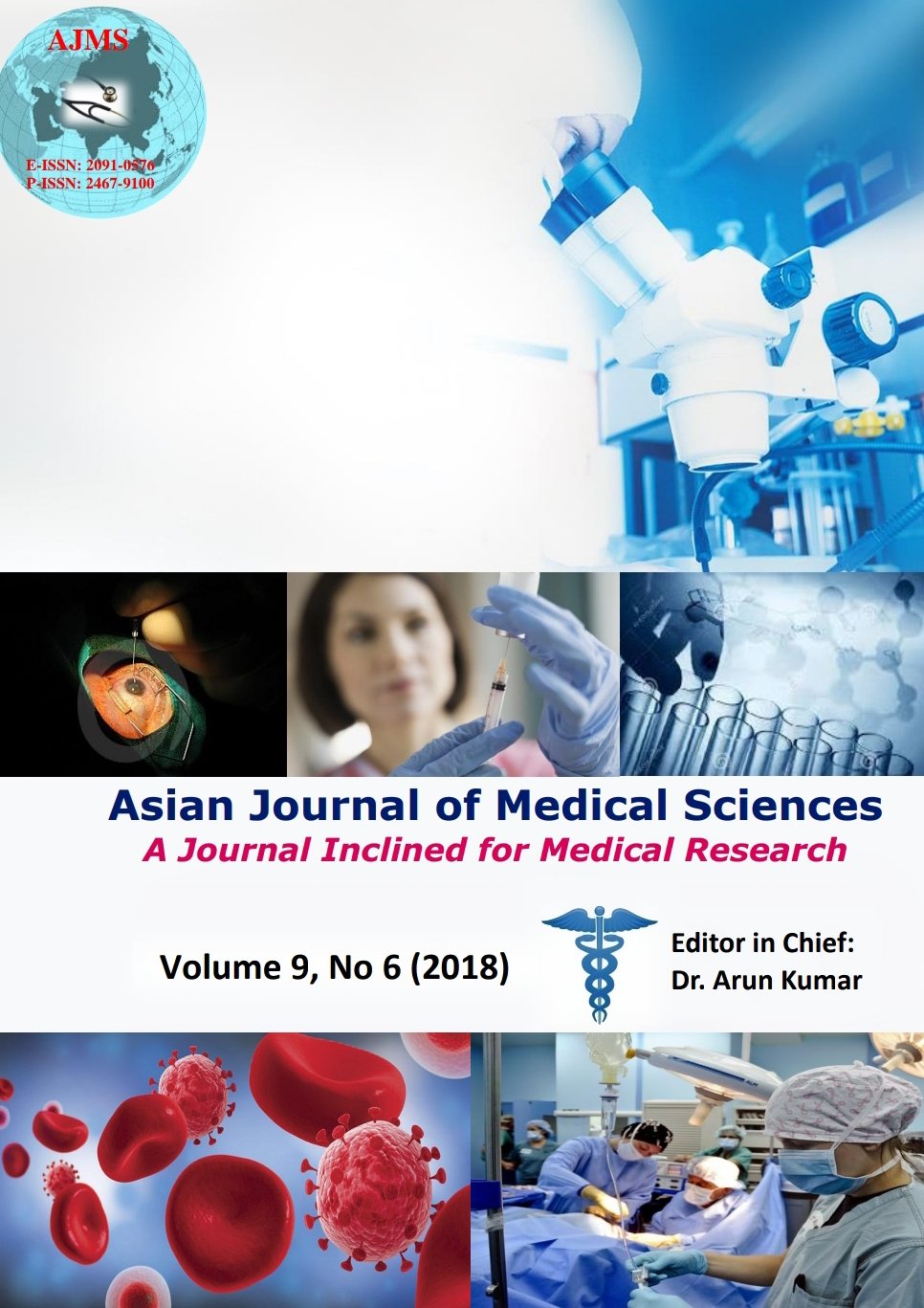Use of Cobra External Fixator for treatment of Distal Radius Fractures
Keywords:
Cobra external fixator, Distal radius fractures, OutcomesAbstract
Background: Distal radius fractures are one of the commonest injuries only after clavicle fractures. These fractures poses challenges to the treating surgeons as a result of which these fractures are sometime treated unacceptably and leads to poor outcome. Among various treatment options for these fractures wrist sparing Cobra external fixator is one of the options with an impressive stability and outstanding functional outcomes.
Aims and Objectives: To determine whether this system can achieve adequate reduction of a variety of DRF, is able to maintain reduction despite hand and wrist movements, whether it compromises hand and wrist functions and leads to long term problems.
Materials and Methods: From July 1, 2016 - June 30, 2017, all skeletally matured patients with acute distal radius fractures (AO-A2, B1, C1, C2) were adequately reduced and fixed with Cobra ex-fix. Immediately post-op patients were encouraged to start range of motion of the wrist as the pain decreased. The patients were followed up in 2,4 and 8 weeks and were analyzed clinically, radiologically, their functional outcomes and any complications.
Results: Twenty-two patients were included in our study. Nine were males and 13 were females. Using the AO classification, 15 were classified as A2, 2 were B1, 3 were C1, and 2 were C2. The mean number of weeks the cobra fixator was maintained was 5.3 weeks. The Cobra ex-fix was able to achieve excellent maintenance of radial height and radial inclination and good maintenance of dorsal tilt. Recovery of functional activities according to Gartland and Werley’s functional scoring system was good to excellent in all patients at 8 weeks follow-up.
Conclusion: The Cobra external fixation system is an outstanding device for use in fractures of the distal radius. It achieves superior anatomic correction and is dependable in maintaining fracture reduction even with hand and wrist use.
Asian Journal of Medical Sciences Vol.9(6) 2018 84-89
Downloads
Downloads
Additional Files
Published
How to Cite
Issue
Section
License
Authors who publish with this journal agree to the following terms:
- The journal holds copyright and publishes the work under a Creative Commons CC-BY-NC license that permits use, distribution and reprduction in any medium, provided the original work is properly cited and is not used for commercial purposes. The journal should be recognised as the original publisher of this work.
- Authors are able to enter into separate, additional contractual arrangements for the non-exclusive distribution of the journal's published version of the work (e.g., post it to an institutional repository or publish it in a book), with an acknowledgement of its initial publication in this journal.
- Authors are permitted and encouraged to post their work online (e.g., in institutional repositories or on their website) prior to and during the submission process, as it can lead to productive exchanges, as well as earlier and greater citation of published work (See The Effect of Open Access).




